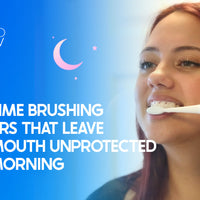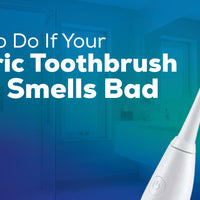Summary:
- Healthy gums are the foundation of a lasting, confident smile.
- Nearly half of adults unknowingly live with gum disease, but it can be prevented.
- Brushing, flossing, and rinsing correctly protect gums from bacteria and inflammation.
- Balanced nutrition, hydration, and stress management support gum strength.
- Regular dental visits and cleanings are essential for long-term gum health.
Think of your gums as the foundation that holds your entire smile together. While bright white teeth often get all the attention, it is your gum health that truly determines the strength and stability of your mouth. Studies show that gum sensitivity and bleeding affect nearly half of adults, with nearly 42% of adults aged 30 and older having periodontitis. Yet many people are unaware they have gum disease until it becomes advanced.
The good news is that gum problems are highly preventable when you follow the right steps.
This guide walks you through simple yet powerful daily habits, lifestyle changes, and professional tips to help you protect your gums for life. Let’s explore how you can build a strong and healthy foundation for your smile.
Your Daily Gum Defense Routine
Your gums need consistent care every single day. Daily brushing, flossing, and rinsing are the pillars of good oral hygiene that keep bacteria under control.
Master Your Brushing Technique
Proper brushing is where gum care begins. Brush twice a day for two minutes using a soft-bristled toothbrush and fluoride toothpaste. Soft-bristled toothbrushes are gentle on gums and prevent recession while still removing plaque effectively. Hold your toothbrush at a 45-degree angle towards your gum line and move it in small circular motions. This helps to clean the gum line where most bacteria tend to collect.
Avoid brushing too hard. It can actually harm your gums and wear away enamel instead of cleaning better.
If you want a more effective cleaning, switch to an electric toothbrush. Electric toothbrushes with UV technology remove plaque and protect gums better than manual brushes. They ensure even pressure, use sonic vibrations for thorough cleaning, and some models sanitize the bristles after each use, keeping them free of 99.9 percent of bacteria. This combination helps to maintain both gum and overall oral health with minimal effort.
Floss Like a Pro
Brushing alone can only reach so much. Flossing is essential because it cleans between teeth and below the gumline where bacteria thrive. Flossing removes plaque where your toothbrush can’t reach and prevents cavities and gum irritation.
Try to floss at least once a day. If you find string floss difficult, consider a water flosser or interdental brush. The method matters less than the consistency. Once you build this habit, your gums will feel cleaner and look healthier.
The Power of Rinse
After brushing and flossing, rinsing is the final step for a fresh and healthy mouth. Use an antimicrobial or alcohol-free mouthwash to reduce bacteria and wash away lingering debris. It helps to control plaque and keeps your breath fresh.
As a bonus tip, try to avoid rinsing with water right after brushing to let fluoride work. Fluoride strengthens enamel and provides long-lasting protection, so giving it time to stay on your teeth can make a real difference.
Early Signs of Gum Disease
Even if you brush and floss daily, gum disease can still develop if early signs go unnoticed. Knowing what to look for is a key to prevention.
Gingivitis: The Reversible Stage
Gingivitis is the first stage of gum disease, and it’s fully reversible with proper care. The symptoms include redness, swelling, tenderness, and mild bleeding when brushing or flossing. You might also experience persistent bad breath (halitosis). These are early warning signs that bacteria and plaque have started irritating your gums.
Periodontitis: The Advanced Stage
In this stage, you may notice your gums receding or pulling away from your teeth, making your teeth appear longer. You may notice that your gums pull away from your teeth, creating pockets that trap bacteria. There could be pus and loose teeth.
It is important to remember that seeing blood when you brush or floss is not normal. It is a primary sign of inflammation and an urgent call to improve your oral hygiene and consult your dentist. Bleeding gums, swelling, or persistent bad breath are warning signs that should never be ignored. The sooner you act, the easier and more successful the restoration of your gum health will be.
Lifestyle Choices for Healthy Gums
Your lifestyle habits play a huge role in the health of your gums. Everything from your diet to stress levels can influence inflammation, healing, and overall gum condition.
Eat for Your Gums
Nutrition is one of the strongest allies for gum health. Eat foods rich in vitamin C, calcium, phosphorus, and omega-3 fatty acids. Vitamin C strengthens gum tissue and boosts healing, calcium keeps your teeth and jawbone strong, and omega-3s help reduce inflammation. Crunchy fruits and vegetables like apples, carrots, and celery act like natural toothbrushes that clean while you chew.
Limit sugary snacks and acidic drinks. They feed harmful bacteria that produce acid and irritate your gums.
Quit Smoking or Vaping
Smoking is one of the main causes of gum disease. It weakens your immune system, restricts blood flow, and slows healing. Vaping might seem safer, but it can still dry out your mouth and upset your oral balance. Quitting either habit significantly improves gum health and reduces your risk of infection.
Manage Stress
High stress can weaken your immune system, making it harder for your body to fight gum infections. People under stress also tend to neglect brushing or grind their teeth more. Finding ways to relax through exercise, meditation, or hobbies can help your body and your gums recover faster.
Stay Hydrated
Water keeps your mouth clean and your saliva flowing. Saliva is a natural defense against bacteria; it washes away food particles and neutralizes acid. Keep a bottle of water handy and sip throughout the day to stay hydrated.
It is also important to remember that gum disease is linked to heart disease, diabetes and other health issues. So, caring for your gums is more than just about oral health. Your overall wellness depends on it.
The Role of Dental Check-ups
Even with perfect daily habits, you still need professional dental care. Dentists can detect problems long before you can see or feel them.
Professional cleanings remove tartar, which is hardened plaque that cannot be removed at home. During your visit, your dentist will check for gum recession, bone loss, or early signs of infection.
For most people, a dental checkup every six months is ideal, though your dentist may suggest more frequent visits if you’re at higher risk. These appointments keep your mouth healthy, help prevent cavities and gum disease, saving you from costly treatments down the road.
Conclusion
Healthy gums are the foundation of a strong, confident smile. Keeping them healthy is all about three essential habits: consistent daily care, smart lifestyle choices, and regular professional checkups.
By brushing and flossing properly, eating nutritious foods, staying hydrated, and visiting your dentist regularly, you can protect your gums and overall health. Think of gum care as an investment in your future, not just a routine task.
Start today by improving your brushing habits and setting your next dental appointment. A little daily care now will keep your gums strong and your smile healthy for good.
Frequently Asked Questions
-
What causes gum disease in the first place?
Gum disease is caused by plaque buildup along the gumline, which leads to inflammation and infection if not removed through daily brushing and flossing.
-
Can using an electric toothbrush improve gum health?
Yes. An electric toothbrush like the SonicPro UV Electric Toothbrush removes more plaque, applies even pressure, and keeps bristles bacteria-free with UV sanitization.
-
How can I tell if my gums are healthy?
Healthy gums are firm, light pink, and don’t bleed when brushing or flossing. Redness, swelling, or bleeding are early signs of gum troubles.
-
What foods should I eat or avoid for healthy gums?
Eat calcium-rich dairy, get vitamin C from leafy greens, and boost your omega-3 intake with crunchy fruits and nuts. Avoid sugary and acidic foods that feed bacteria and wear down enamel.






